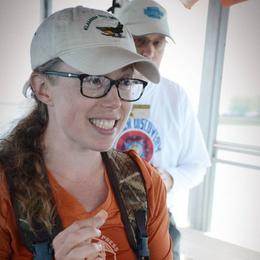There is nothing quite like observing fall raptor migration in Michigan! Each fall, hundreds of thousands of hawks, falcons, and eagles pass through the Metro Detroit Area, making it a migratory hot spot.
Raptors often follow geographic features like our Great Lakes coastlines, which help guide them south. To avoid crossing the water bodies of the Great Lakes, many birds fly through the St. Clair – Detroit River system, before they round the western shores of Lake Erie and continue on their journeys south.
Unlike many songbirds, raptors migrate exclusively during the day, providing many opportunities to see their great flocks, also known as “kettles.” Kettles can include up to tens of thousands of individual raptors, which is an incredible sight! Imagine watching an invisible trail system in the sky come to life as hundreds to thousands of birds of prey take flight and migrate south.
In September, Broad-winged Hawks and Sharp-shinned Hawks will be the first raptor visitors to arrive and will migrate through the state by the hundreds or thousands each day. In October, hawk diversity will increase as Cooper’s Hawks, Sharp-shinned Hawks, Turkey Vultures, and more start to move through Michigan in great numbers. By November, some northern owls, such as Great Gray Owl, Snowy Owl, Northern Hawk-Owl and Boreal Owl, make their way into the Upper Peninsula. Rough-legged Hawks and Golden Eagles will move through the state in decent numbers in November, wrapping-up raptor migration in Michigan.
Want to see the wonders of raptor migration in action, but not sure where to start? Learn more about Detroit River Hawk Watch and Mackinac Straits Raptor Watch, and plan your visit today! Take a trip to one of Michigan’s Important Bird Areas, most of which are on public lands, or tour one of Michigan’s Birding Trails, and submit an eBird checklist this fall!
ABOUT MI BIRDS
MI Birds is a public outreach and engagement program created by Audubon Great Lakes and Michigan Department of Natural Resources, which aims to increase all Michiganders’ engagement with public lands that are important for birds and local communities. Follow us on Facebook, Instagram and Twitter or sign-up for email updates.














